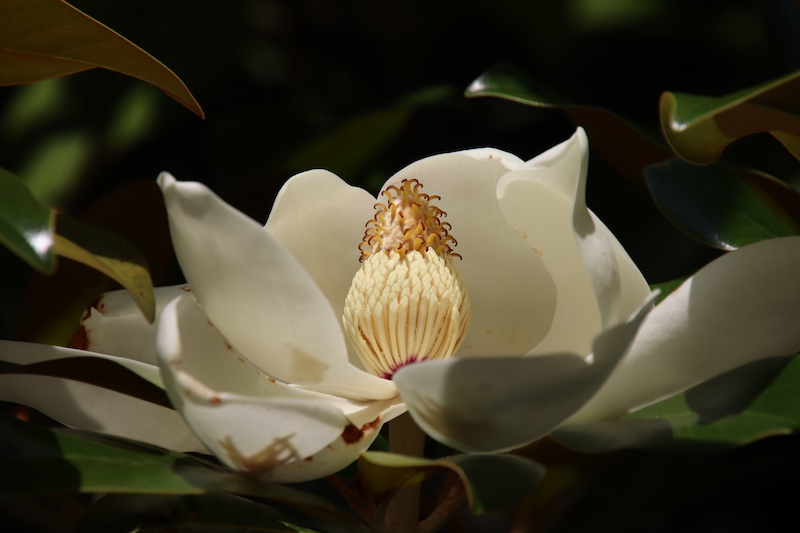Happy Mystery Monday! Can you guess what is pictured in photo #1?

The answer to last week’s mystery is magnolia, Magnoliaceae, pictured in photo #2.

Magnolia is a large genus of 210–340 species of the family Magnolioideae. They’re a native evergreen tree or shrub with a straight trunk, conical crown, and very fragrant, large, white flowers. Their flowers are waxy and their oblong leaves are shiny and green with silvery undersides.
In cool locations, the sweet bay magnolia is usually a deciduous shrubby plant with multiple stems, while in warmer zones it tends to be an upright tree that remains evergreen.
Magnolias, especially Southern magnolia, produce seeds that are rich in fats and energy, making them a valuable food source for many animals, including wild turkeys, mockingbirds, and robins, as well as small mammals, like squirrels and opossums. The dense foliage of some magnolia species provides year-round shelter for small mammals and nesting sites for birds, offering protection from predators and harsh weather conditions.
Magnolia flowers produce a sugar-like substance that attracts pollinators. The flowers of many magnolias are considered edible.
Magnolias are an excellent plant for boggy locations or clay soils.
Mystery Monday is sponsored by the Spy Newspapers and Adkins Arboretum.



Write a Letter to the Editor on this Article
We encourage readers to offer their point of view on this article by submitting the following form. Editing is sometimes necessary and is done at the discretion of the editorial staff.